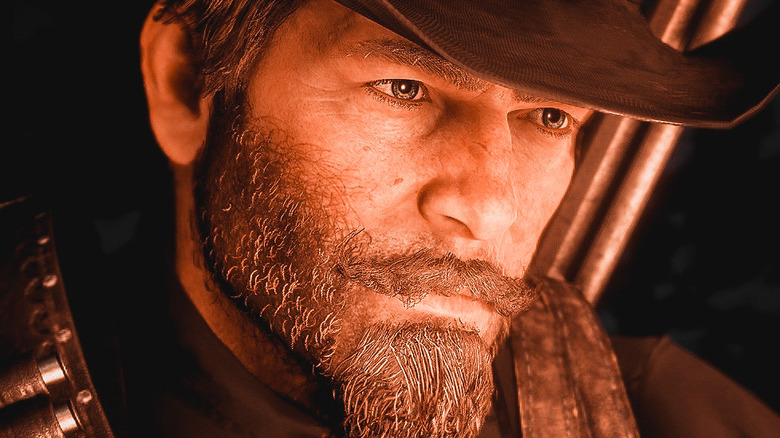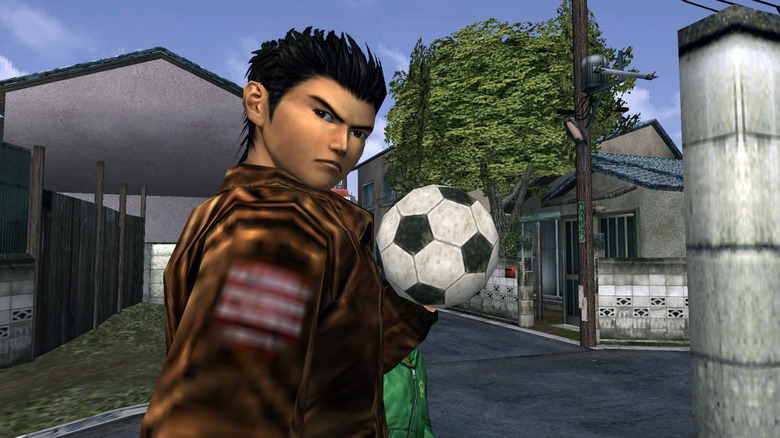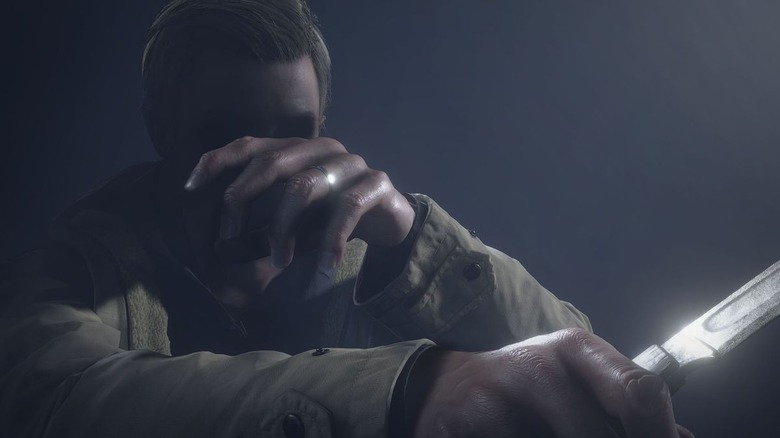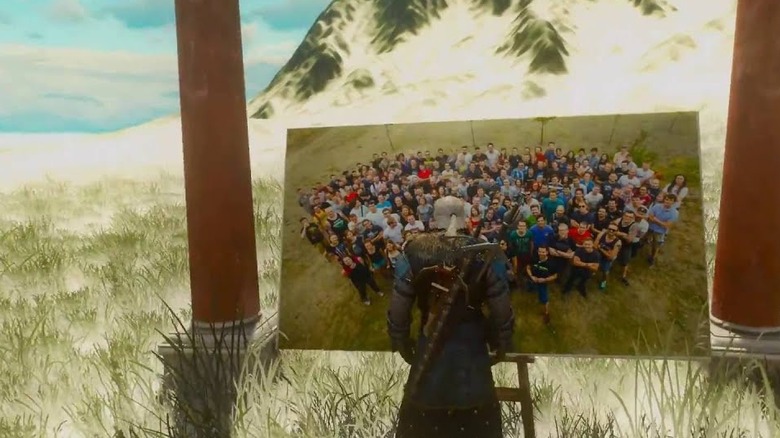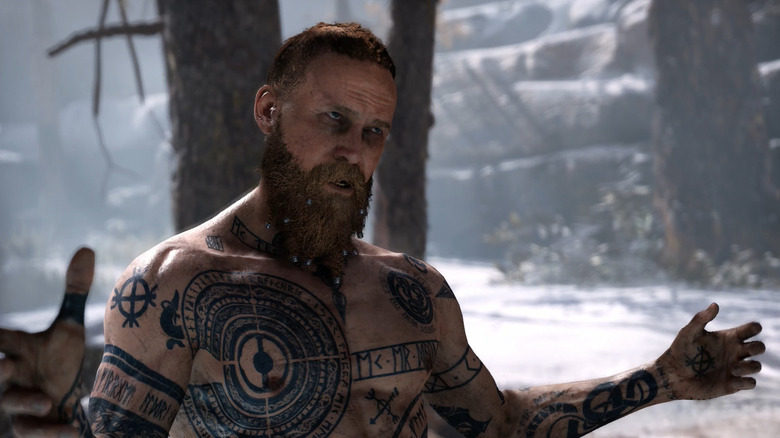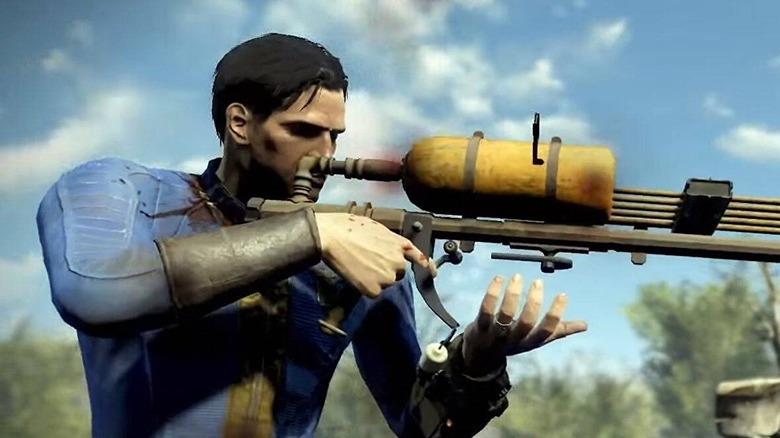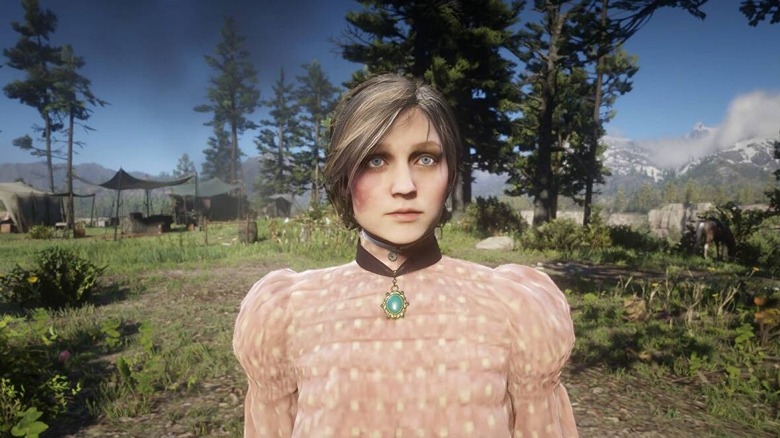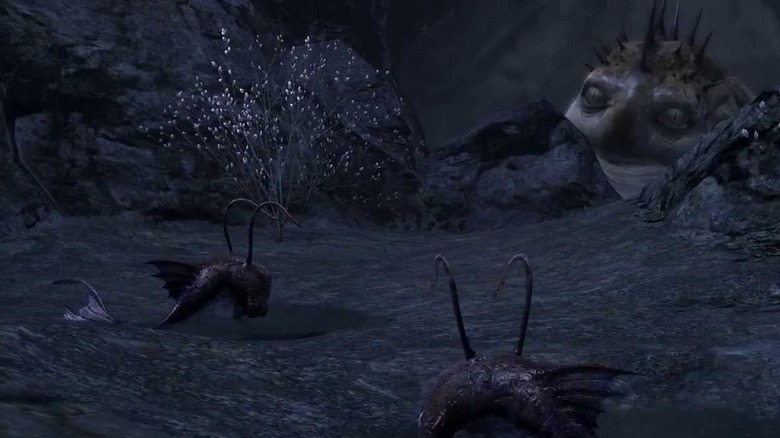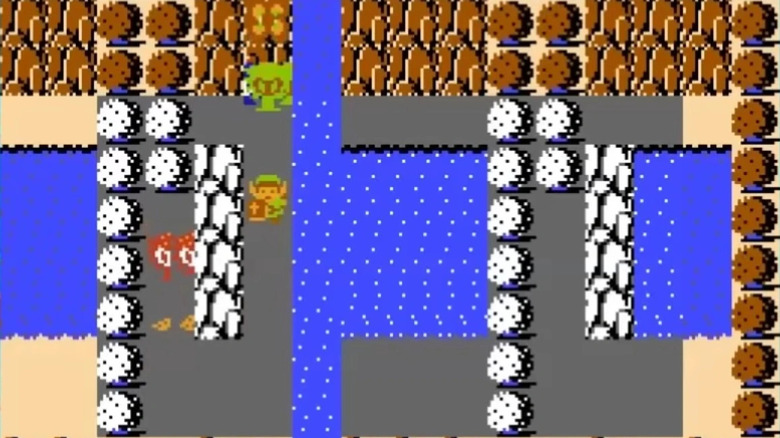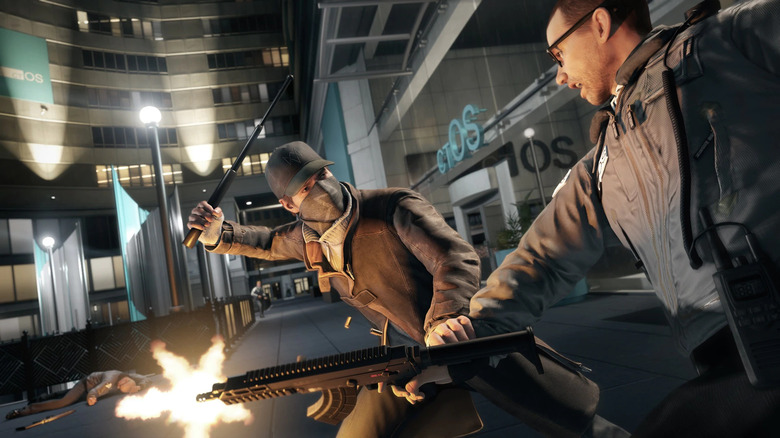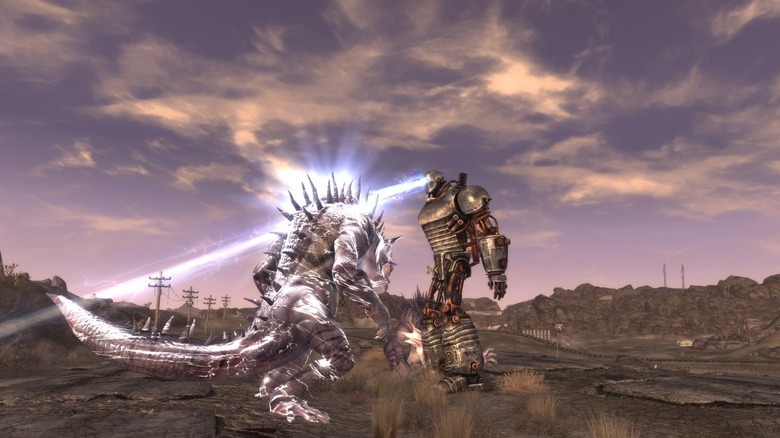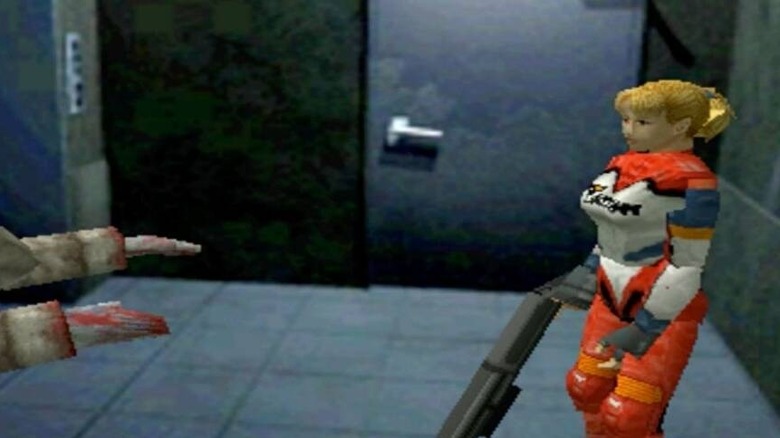Hacks That Revealed Hidden Secrets In Games
Games are an incredibly complicated form of media. During development, they constantly shift and morph in their focus, features, and elements until a final product that somehow combines all of the game's assets, mechanics, and various systems comes together in harmony. With how complicated even the simplest of games is, it is no wonder that so many games release with hidden secrets and abandoned content that still has hidden code in the files of the final release.
For many years, players and fans were unable to access this code at all, but thanks to modern developments in the industry, fans with hacking talents can thoroughly pick apart every aspect of a game. This can help players learn exactly how mechanics work, allow them to make mods, or — in the case of the games on this list — find secrets within the game that would never have been found otherwise. So, from cut assets to fun little details, here are some of the best game secrets found by hackers.
Shin Shoryuken secret move (Shenmue)
"Shenmue" is a cult classic open-world RPG that despite revolutionizing the video game industry was destined to fail. Despite its financial struggles, the series has built a dedicated base of fans that adore its dry approach to the action-adventure formula. Through the support of that fanbase, the series has been able to support three full releases while fans have occupied themselves between each one by scouring every inch of the series' available content.
According to Phantom Riverstone, this led to one fan working their way into the code of the first "Shenmue" to find a hidden move that is a reference to the iconic Shin Shoryuken move used by Ryu in "Street Fighter." The move's existence was originally mentioned by a developer of the game in 2018, but it was not fully found until 2019. It took so long for the move to be found because while it was present in the game ever since its release, it could only be performed by inputting a six-frame series of buttons in a three-frame time window — making the move physically impossible.
This made the move require hacking to be seen in action. Interestingly, using the move was also used during a cutscene, showing that the developers put a reasonable amount of work into creating it before eventually disabling it before the final release. Now, fans that want to see it for themselves can adjust the game's code to do so.
Ethan Winters' face (Resident Evil)
Ethan Winters was first introduced to the "Resident Evil" series with "Resident Evil 7." After being brutalized and tortured by that game, he was again tapped by the developer team to act as the protagonist in "Resident Evil Village." Despite playing a key role in the series' transition to a first-person and horror-centric gameplay style, there is a lot that the games haven't revealed about him — like what his face looks like.
It isn't clear why Capcom doesn't want fans to know exactly what Ethan looks like, but when "Village" received a fan-made mod that allowed the game to be played from a third-person perspective, fans discovered that his model didn't even have a head at all. When playing the officially released third-person mode, Ethan turns his face from the camera whenever players try to look at him. In "Village" players can also unlock different figurines that act as collectibles to be viewed later, allowing players to closely examine the detailed models of nearly everything in the game. Ethan has one of those models himself, but it features a dark shadow over his face that prevents players from getting a look.
However, Nexus Mods user SilverEzredes created a mod that removed that shadow, revealing a fully modeled face on the collectible. This makes Capcom's insistence on hiding his face even stranger, and it remains to be seen if it's simply waiting to show his face in a future release.
Photo of developers (The Witcher 3: Blood and Wine)
The maps and areas of "The Witcher 3: Wild Hunt" are ginormous and filled with tons of hidden details and secrets. This led to some members of the game's community to using a mod for free camera movement to soak in every small detail in the game's locations. This continued when the game's final expansion, "Blood and Wine" released and introduced the new area of Toussaint.
One player exploring the area with a free camera mod took to the top of the mountains that serve as a beautiful backdrop in the country. There, they found a small grass plateau with a large canvas on an easel, flanked by two red pillars. After inspecting the canvas a picture appears of the entire "Witcher 3" development team, serving as a heartwarming send-off for the game and thanks to the talented team behind it. It may not take seven in-game years to find like one of the other Easter eggs in "Blood and Wine," but it is a really sweet one for players to find.
Baldur is rude to the end (God of War 2018)
"God of War" from 2018 completely changed the tone and presentation of the series. While it started with a more quiet and reserved opening than the series' other entries, it quickly ramped up in intensity when Kratos has to fight Baldur in an explosive test of skill and strength. The scene left a massive impression on fans, and for good reason. The entire fight is explosive and cathartic as Kratos fights against the Norse god around his home. Throughout the entire fight Baldur jokes around and makes small jabs at Kratos' past and recently passed wife, which only makes it more satisfying when Kratos seemingly snaps Baldur's neck and drops his lifeless body into a ravine.
One player managed to mod the game and free the camera used it to try and follow Baldur's body as it falls into the ravine. At the time Push Square reported on the player's findings that revealed that Baldur was rude to Kratos even after being defeated. By following Baldur's body, the player found that his model froze in the air after disappearing from the game's original camera. There, it floats with Baldur's legs spread open and both his arms outstretched to give Kratos two middle fingers. The pose is definitely just a small joke thrown in by a developer of the game, but it is a fun secret for fans to find and fits perfectly with Baldur's irreverent personality.
The hidden harpoon gun (Fallout 4)
Bethesda RPGs are massive titles that are celebrated for how much effort the developers invest in ensuring they are relatively easy to mod by their communities. This allowed Bethesda's "Fallout 4" to start getting picked apart by hackers and fans immediately upon its release. One such fan found a cut harpoon gun that still had elements remaining in the game's files. They managed to extract that data and make it active, allowing them to create a mod that re-added the weapon to the game, as reported by PCGamesN.
Using the weapon does look odd because of its incomplete nature, which leaves the player's hands disconnected from the gun or misaligned during animations. The gun also has an effect when it shoots that sees bubbles emerging near its barrels, which led to some fans theorizing that the gun was originally intended for an underwater quest that also hit the cutting room floor. Interestingly, a harpoon gun was eventually added to the game as part of its "Far Harbor" DLC, but takes an entirely different form than the one that was planned for the base game.
The missing princess (Red Dead Redemption 2)
Another massive game filled with secrets, "Red Dead Redemption 2" goes to a lot of places that players don't expect it to. Despite the game's grounded and realistic depiction of the wild west, players can find an urban vampire, a time traveler, and plenty of ghosts. However, the game also had quite a lot of content cut before its release, and some elements of that content are still in the game's code.
One of these pieces is a storyline revolving around a princess from Luxembourg that was kidnapped on a trip to America 15 years before the game's opening. Throughout the game's world, players are able to find nods and hints regarding the story, including newspaper clippings and posters with an aged-up drawing of the princess that promises a reward for her return. However, players were never able to actually find anything solid regarding the princess or what happened to her until one fan found a complete model for the character buried in the game's files.
While the model is all that is left of the possible mission involving her, there are some fun details that can be gleamed from it. Primarily, the model looks extraordinarily close to the artist's rendition on the posters offering a reward for her return.
The Ayerie (Final Fantasy 14)
When "Final Fantasy 14" was initially released, it was not received well. The game struggled so much, in fact, that it was eventually taken offline and rebooted under a new director, seeing the original version of the game, known as 1.0, being entirely replaced by "Final Fantasy 14: A Realm Reborn."
While "A Realm Reborn" was generally better received than 1.0, some fans have dedicated themselves to thoroughly documenting and exploring the lost version of the popular MMORPG. One of these fans is the YouTube channel Speakers Network, who managed to hack their way into an unfinished dungeon in 1.0 known as The Ayerie. While the dungeon is completely void of enemies or mechanics, gaining access to it does provide an exciting look at where 1.0 could have gone if "A Realm Reborn" was never released.
One particularly interesting part of Speakers Network's exploration of the dungeon is that they found an audio file of footsteps that played even when they weren't moving. This adds a creepy layer to the dungeon that's only emphasized by a floating head that followed them around, which fans quickly dubbed The Fess. It seems unlikely that fans will ever know if these were intended elements of the dungeon or just artifacts of its unfinished state, but they add to the excitement of the find even more.
The Minus World (The Legend of Zelda)
Minus Worlds — as they became known after initially being discovered through a glitch in "Super Mario Bros." – are an interesting byproduct of how older Nintendo cartridge games read data in the game files to load levels. Since the developers don't always use the full quantity of possible levels in the game's engine, there are a number of combinations that can be loaded that aren't officially developed in the game. In the "Mario Bros." games, these levels tend to be either copies of official levels or random dumps of items and blocks that are impossible to navigate because of an internal error.
A YouTuber going by the name of SKELUX also found in 2019 that a similar situation could be found in the original "Legend of Zelda." To find the Minus World, SKELUX says that they had to spend six hours pouring through the game's code to find a way to escape its established level bounds. When they did, they found a lower half of the map normally entirely inaccessible to the player. The area consists of random tile sets that are populated with glitching enemies. Because of how the player accesses the area they avoid colliding with any of the tiles, technically making the game's entire Minus World playable. There are even caves with items for players to grab if they really wish to.
Better graphics (Watch Dogs)
Ubisoft's open world hacking title "Watch Dogs" was the subject of plenty of controversy and fan complaints. While many fans had severe complaints regarding the game's ending, its launched was marred by a controversy regarding its graphics. As explained by Kotaku at the time, the game received a severe graphical downgrade before its release, which left fans wondering why the game did not look nearly as advanced as it had in its earliest trailers.
The downgrade was understandably disappointing to fans, but the situation got a lot more confusing when PC players began digging around the game's code. They discovered deactivated graphical settings still present in the game that, when enabled, made it look much more like it had in its original trailers. This allowed a mod to re-enable the settings and return the game to the visuals fans had expected before its launch. Exactly why the settings were disabled has not been revealed by Ubisoft, making the whole situation an unbelievable part of gaming history.
Gojira (Fallout: New Vegas)
Obsidian Entertainment's take on the "Fallout" universe, "Fallout: New Vegas," is filled with strange things to find from fun weapons to classic movie references. One of the strangest features initially planned for the game was a creature called Gojira that was cut before launch. However, scripting and a model for Gojira can still very much be found in the game.
For those who don't know, Gojira is the Japanese name for Godzilla, so it should come as no surprise that the monster in "New Vegas" is a colossal lizard that towers over almost everything in the game's world. Fans were able to get into the game's files and unleash Gojira onto the Mojave Wasteland.
Once Gojira is free in the game world, it stomps around with a hilarious walk cycle while trying to hunt down any living thing to kill. It can wipe out entire settlements or nests of Death Claws with ease, and its stats are so high that the player cannot kill it at all unless they use other mods to help them, like also unleashing Liberty Prime for a post-apocalyptic kaiju battle.
Resident Evil 1.5 (Resident Evil 2)
After the massive success of the first "Resident Evil," the developers at Capcom began working on a sequel. As game developers normally do, they released screenshots and more details about the game as they got closer to launch. Shortly after revealing some information about the game, however, they decided to instead scrap the project and restart, eventually developing "Resident Evil 2" as fans know it today.
However, the original game was around three quarters of the way complete when its development was rebooted, and the developers had to make an entirely different game in a much shorter span of time. This led to them leaving all of the work done on the original game in the code for the released version, which fans were able to find years later. Those same fans were then able to extract that code to rebuild the game that almost was, which is now referred to as "Resident Evil 1.5."
While unearthing 1.5 is a great moment of game preservation and saving lost media, it also provides a fascinating look at the direction the series almost went in. It featured two stories still, with Leon playing a slightly different role, while also introducing a unique character named Elza Walker. The earlier version of the game also featured more detailed damage to enemy models and some stranger enemies, like infected gorillas and a man spider.

